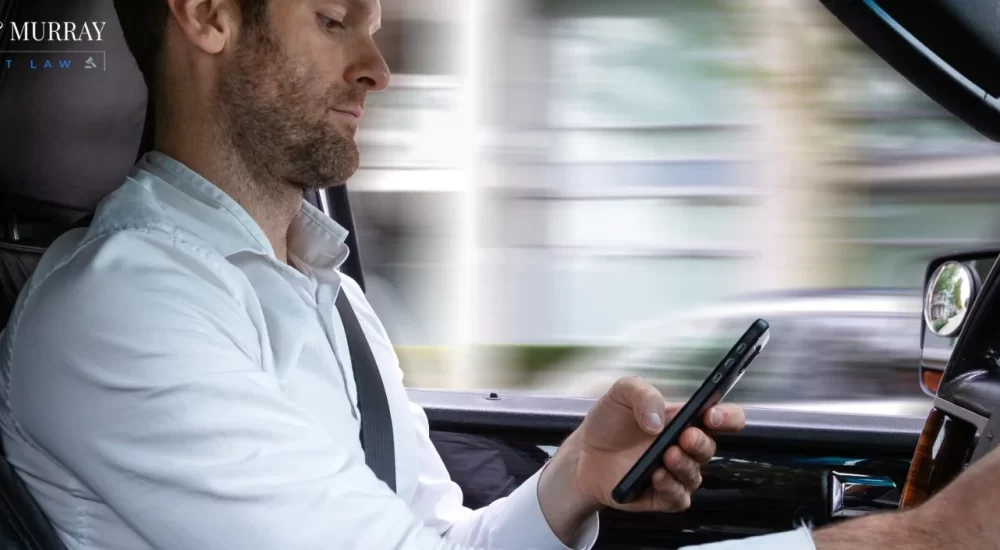|
|
Last Modified on Jun 12, 2025
When navigating the often chaotic roads of Houston, drivers face many challenges. However, some of the most dangerous ones are not external. If you’ve ever wondered what the difference is between distracted and inattentive driving in Houston, you’re not alone. These two terms are often used interchangeably; however, in the eyes of the law and insurance companies, they have distinct meanings. Understanding the nuances can help drivers stay safe and determine liability.
Distracted Driving vs. Inattentive Driving
A distraction can be any activity that takes a driver’s attention away from the road. These are usually active activities, such as texting and driving, looking in the backseat, eating, or taking your hands off the wheel to grab something else in the vehicle.
On the other hand, inattentive driving is more of a passive way of not paying attention to the road. This includes daydreaming or being mentally fatigued. While both behaviors compromise road safety, distracted driving is more often tied to specific, intentional actions.
In Houston, where I-45 and Beltway 8 rank among the most congested highways in the country, these distinctions matter. In Texas, distracted driving contributes to 1 in 9 traffic fatalities. However, driver inattention is the most common cause of fatal accidents. Nationally, distracted driving caused 3,275 lives in 2023. In 2025, nearly one in 5 crashes was caused by distracted driving.
Why This Distinction Matters in Houston Car Accident Cases
While the behavior may seem similar, how it’s documented can affect everything from traffic citations to insurance claims and even civil claims. For instance, if a driver is cited for distracted driving, that’s typically a more enforceable and provable offense, especially with cell phone records, surveillance footage, or eyewitnesses. On the other hand, inattentive driving is harder to quantify, often inferred from the driver’s own admission or the circumstances of the crash.
In legal terms, distracted driving may carry heavier consequences. Texas law prohibits texting while driving statewide, and local ordinances in Houston go further, making it illegal to use a handheld device in active school zones and construction zones. Distracted driving penalties in Texas can include fines, and if someone is injured or killed, the offense can escalate to a misdemeanor or even felony charge.
In these cases, it’s critical to hire a car accident lawyer with experience in Houston traffic law. Legal professionals who understand the subtleties between different forms of driver negligence can better argue your case and secure appropriate compensation.
Stevenson & Murray have successfully represented countless clients in Houston car accident cases and know how to navigate the legal system, including local courts like the Harris County Civil Courthouse and the 234th Judicial District Court.
When to Hire a Car Accident Lawyer
Let’s say a driver rear-ends your vehicle near the 234th District Court on Franklin Street. If the driver was texting when it happened, it’s a clear-cut case of distracted driving. If they were lost in thought and didn’t notice that the light changed, it’s categorized as inattentive driving.
Both are negligent. However, distracted driving may carry greater liability due to the provable nature of the distraction. A skilled car accident attorney can differentiate between the two and hold the right party accountable.
If you or someone you love has been involved in a crash, it’s essential to seek legal representation as soon as possible, especially if you suspect the other driver was distracted or inattentive.
A seasoned car accident attorney can:
- Request phone records
- Interview eyewitnesses
- Secure surveillance footage
- Consult accident reconstruction professionals
- Negotiate with insurers
Choosing to hire a car accident lawyer could mean the difference between walking away with a minimal settlement and receiving full compensation for medical bills, lost wages, property damage, and emotional suffering.
About Stevenson & Murray
Stevenson & Murray is a premier personal injury law firm with both local roots and a nationwide reach, located in Houston at 24 Greenway Plaza. Led by founding partner John W. Stevenson Jr., who has practiced in Texas since 1982 and built a strong reputation in maritime and personal injury litigation, the firm’s seasoned attorneys are known for delivering outstanding trial and negotiation results.
Together, these accomplished lawyers handle cases ranging from auto accidents and maritime claims to wrongful death, offering compassionate guidance backed by decades of courtroom experience. Stevenson & Murray ensures every client has powerful advocacy and personalized attention.
FAQs
What Is the Difference Between Distracted Driving and Inattentive Driving?
The difference between distracted driving and inattentive driving is that distracted driving typically involves an active action, such as texting and driving or adjusting your GPS. On the other hand, inattentive driving is more passive, such as daydreaming or mentally paying attention to something else. While both reduce a driver’s focus, distracted driving typically involves a specific action, whereas inattentive driving stems from a general lack of awareness.
What Are Signs of Inattentive or Distracted Driving?
Signs of inattentive driving include daydreaming, fatigue, or mentally thinking about something else and not thinking about driving. Signs of distracted driving include more active actions, such as texting, eating, talking on the phone, or fiddling with the radio. Both distracted and inattentive drivers often show poor lane discipline, erratic movement, or a failure to respond quickly to surrounding traffic.
What Are the Three Types of Distracted Drivers?
The three types of distracted drivers are visual, where a person takes their eyes off the road; manual, where a driver takes their hands off the wheel; and cognitive, when the driver takes their mind off driving. For example, texting combines all three types where drivers look at their phone (visual), type a message (manual), and mentally focus on the conversation (cognitive), making it one of the most dangerous forms of distraction behind the wheel.
What Is Inattentive Driving?
Inattentive driving refers to the inaction of paying full attention to the road. Inattentive driving refers to a driver mentally disengaging from the road without necessarily doing anything physically distracting. This could mean daydreaming, being drowsy, or simply “zoning out.” Unlike distracted driving, it doesn’t always involve external actions or devices, but it still poses significant dangers by reducing a driver’s ability to react to traffic, signals, or unexpected events.
Contact Stevenson & Murray Today
If you’ve been injured due to another driver’s negligence, Stevenson & Murray can help you navigate the legal system. Contact us today for a consultation to start fighting for your future.





